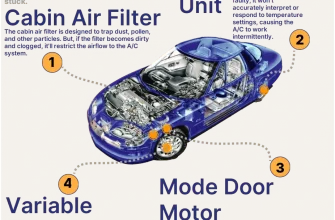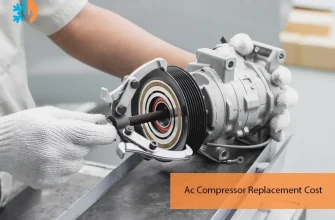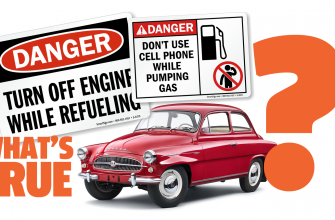When it comes to automobile maintenance and repair, understanding the intricacies of vehicle electrical systems is crucial. One of the most common procedures performed by mechanics and DIY enthusiasts alike is disconnecting the battery. However, many may not realize the potential implications this seemingly simple action can have on a vehicle’s electrical system. In this article, we delve into the impact of disconnecting the positive battery terminal, exploring the consequences, safety measures, and best practices.
Understanding Vehicle Electrical Systems
Before we explore the effects of disconnecting the positive battery terminal, it’s essential to grasp how vehicle electrical systems operate. Modern vehicles are equipped with sophisticated electrical systems that power everything from the engine management system to infotainment features. These systems rely heavily on a stable and consistent power supply provided by the battery.
The Role of the Battery
The battery serves as the heart of a vehicle’s electrical system, providing the necessary voltage to start the engine and maintain various electrical functions. It acts as a buffer, absorbing voltage spikes and ensuring that the electrical system operates smoothly; When the positive terminal is disconnected, the entire electrical circuit is interrupted.
Immediate Effects of Disconnecting the Positive Terminal
Disconnecting the positive battery terminal can lead to several immediate effects on a vehicle’s electrical systems:
- Loss of Power: Disconnecting the positive terminal results in an immediate loss of power to all electrical components. This means that the vehicle will not start, and all electronic features will cease to function.
- System Reset: Many modern vehicles have electronic control units (ECUs) that store data and settings. Disconnecting the battery can reset these systems, leading to the loss of saved settings, such as radio presets and seat positions.
- Potential Error Codes: When the battery is reconnected, the vehicle’s onboard diagnostic system may register error codes due to the sudden loss of power. These codes may require scanning and clearing, adding additional steps to the maintenance process.
Safety Considerations
Safety should always be a priority when working with vehicle electrical systems. Here are essential safety measures to consider before disconnecting the positive battery terminal:
- Wear Protective Gear: Always wear safety goggles and gloves to protect yourself from potential acid leaks or sparks.
- Ensure the Vehicle is Off: Always turn off the ignition and ensure that all electrical components are powered down before disconnecting the battery.
- Avoid Short Circuits: Be cautious of tools or metal objects that may bridge the battery terminals, causing short circuits and potentially damaging the electrical system.
Best Practices for Disconnecting the Positive Terminal
To minimize negative impacts when disconnecting the positive battery terminal, follow these best practices:
- Turn Off All Accessories: Ensure all lights, radios, and other electrical components are turned off to prevent surges when reconnecting.
- Disconnect the Negative Terminal First: When disconnecting the battery, always remove the negative terminal first to minimize the risk of short circuits.
- Reconnect in the Right Order: When reconnecting, always connect the positive terminal before the negative to ensure the system grounds correctly.
Disconnecting the positive battery terminal is a routine task in vehicle maintenance, yet it can have significant impacts on a vehicle’s electrical systems. Understanding these effects, adhering to safety protocols, and following best practices can help ensure that the process is smooth and problem-free. By being aware of the implications, vehicle owners can better maintain their automobiles and avoid unnecessary complications in the future.
In essence, while disconnecting the positive battery terminal is sometimes necessary, it should be approached with caution and knowledge to protect the integrity of your vehicle’s electrical system.
Long-Term Considerations
While the immediate effects of disconnecting the positive battery terminal are clear, it’s also essential to consider the long-term implications for a vehicle’s electrical system. Over time, repeated disconnections can lead to several issues:
- Battery Degradation: Frequent disconnects can lead to battery wear and tear. The battery management system may not always recalibrate effectively, potentially leading to shorter battery life.
- Corrosion Risks: Disconnecting and reconnecting terminals can lead to exposure of the battery posts to air and moisture, increasing the risk of corrosion. This can hinder electrical connections and lead to starting problems.
- ECU Sensitivity: Modern vehicles feature increasingly sensitive electronic control units. Regularly disconnecting the battery may confuse the ECU, leading to erratic behavior or performance issues in the long run.
When to Disconnect the Positive Terminal
Knowing when it’s appropriate to disconnect the positive battery terminal is as crucial as understanding its impact. Here are scenarios where this procedure is typically warranted:
- Maintenance and Repairs: When performing significant repairs, especially those involving the electrical system, disconnecting the battery is essential for safety and to prevent accidental short circuits.
- Battery Replacement: If replacing the battery, disconnecting the positive terminal first ensures that the replacement process is safe and minimizes risks of electrical shorts.
- Electrical System Diagnostics: Disconnecting the battery can be necessary during diagnostics to reset error codes and clear temporary glitches in the system.
Final Thoughts
Disconnecting the positive battery terminal is an essential skill for anyone involved in vehicle maintenance, but it’s not without its complexities. Understanding the immediate and long-term impacts on a vehicle’s electrical systems is crucial for maintaining optimal performance and longevity. By adhering to safety practices and employing best practices during disconnection, you can mitigate many of the potential downsides.
As vehicles continue to evolve with more integrated electrical systems, the importance of understanding these systems will only grow. Knowledge is power, especially when it comes to the care and upkeep of your vehicle. Whether you’re a seasoned mechanic or a novice car owner, being informed about the effects of disconnecting the battery will serve you well on your automotive journey.









Great insights into vehicle electrical systems! This information is crucial, especially for those who frequently work on their cars. Well done!
I appreciate how detailed this article is! The explanation about the role of the battery was particularly enlightening. Great job!
Very informative read! I never realized how disconnecting the positive terminal could reset my car
I loved this article! It’s a must-read for DIY car enthusiasts. The safety measures discussed are particularly useful for avoiding mistakes.
This article provides an excellent overview of the importance of understanding vehicle electrical systems. I learned so much about the consequences of disconnecting the battery!
Fantastic article! The section on immediate effects was clear and easy to understand. It’s essential knowledge for anyone working on their vehicle.